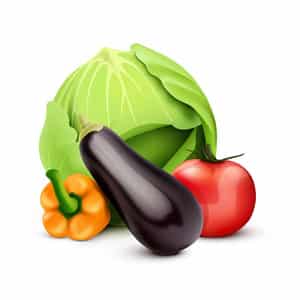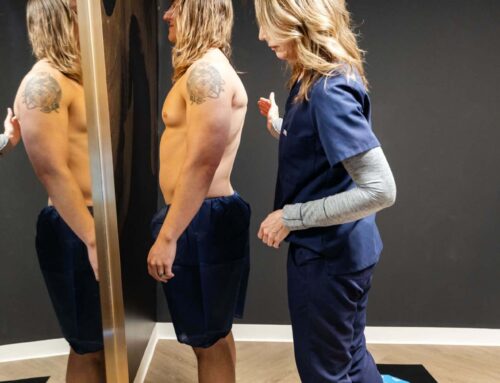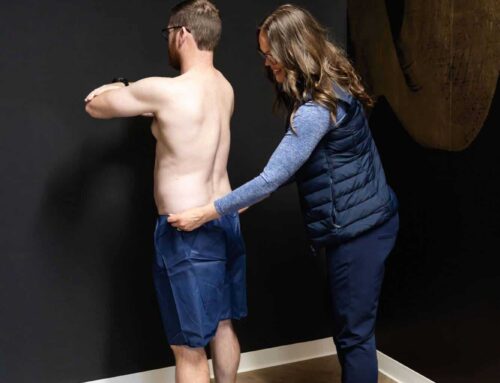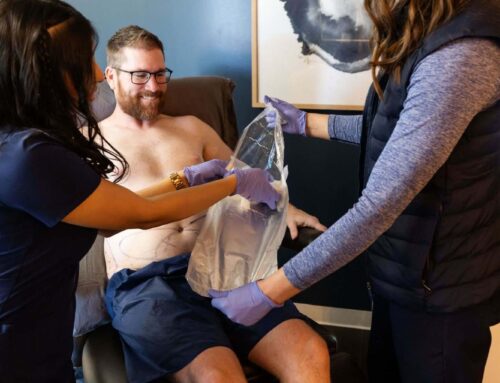
It probably comes as no surprise to you that most Americans don’t eat the suggested amount of vegetables they should. In fact, according to the Centers for Disease Control (CDC), only 1 in 10 of us is eating enough veggies on a daily basis. In a 2015 report, the CDC said less than 9% of Americans eat two to three cups of vegetables each day, which is the recommended amount. So the answer to the question if you are eating enough vegetables is likely no. How can you increase the greens you’re ingesting?
Eat Veggies at Every Meal
The best way to be sure you’re eating enough vegetables is to add them to each meal. If you need upward of three cups a day, that’s one cup at each main meal. That’s really not a lot. Of course, you can certainly snack on veggies in between meals to give yourself an even bigger boost.
At breakfast, try a green smoothie. Pair asparagus, spinach, and mushrooms with your eggs. Lunch and dinner are a bit easier. Salads, steamed veggies, and casseroles can be great ways to ensure you’re eating enough vegetables at these bigger meals.
In the US, we tend to think of veggies as sides, but if you challenge that mindset, you’ll quickly see your veggie intake increase. No, that doesn’t mean you have to be vegan—or even vegetarian—to eat enough veggies. Just focus more on your greens and think of the meat as a side. If you make your plate 80% vegetables to 20% protein or grains, you’ll be well on your way to getting enough.
Why Eating Enough Vegetables Matters
Veggies are a main source of all the nutrients our bodies need on a daily basis. While you should always aim for a well-rounded approach to your diet, you can obtain nearly everything you need from a plant-based diet.
Dark, leafy greens (think spinach, kale, collard greens, and mustard greens) are full of fiber, folate, antioxidants, vitamins C and K, calcium, and iron. They also contain carotenoids, which have been shown to stop the growth of certain types of cancer.
Believe it or not, you can also get protein from vegetables. To get the most amount of protein, however, be sure to round out your meal with a lean meat, dairy, grain, or legume. Pairing a grain and a legume (like black beans and rice) creates a complete protein, so it is possible to be vegan or vegetarian and keep protein levels in the safe zone.
If you are on a grain- or gluten-free diet and fear not getting enough fiber, don’t worry. All vegetables and fruit contain fiber. A rich, varied plant-based diet will provide sufficient fiber for most of us.
Vary Your Veggies
Do you find it challenging to eat enough vegetables because you simply don’t like them? Now is a good time to do some experimenting. Look for recipes on the internet. Shop your local farmers market. Try new things when eating out. Visit vegetarian-friendly restaurants and order off that menu instead of your regular choice.
You can even start eating enough vegetables by having more dessert! Carrots, zucchini, beets, squash, and pumpkins are not-so-uncommon ingredients in healthy baked goods. Don’t limit yourself to just salads, or you’re going to get really bored really quickly!
At Bodify, We Care About Your Health
One of the obvious benefits of shifting to more vegetables in your diet is that you’ll feel full faster and eat less. And of course, that means you’ll start to lose weight—in a healthy way. At Bodify, we are the place clients go to fit into their favorite pair of jeans or look great for the high-school reunion. In addition to CoolSculpting, you can help yourself by increasing your vegetable intake. Truly, it’s a win-win.






